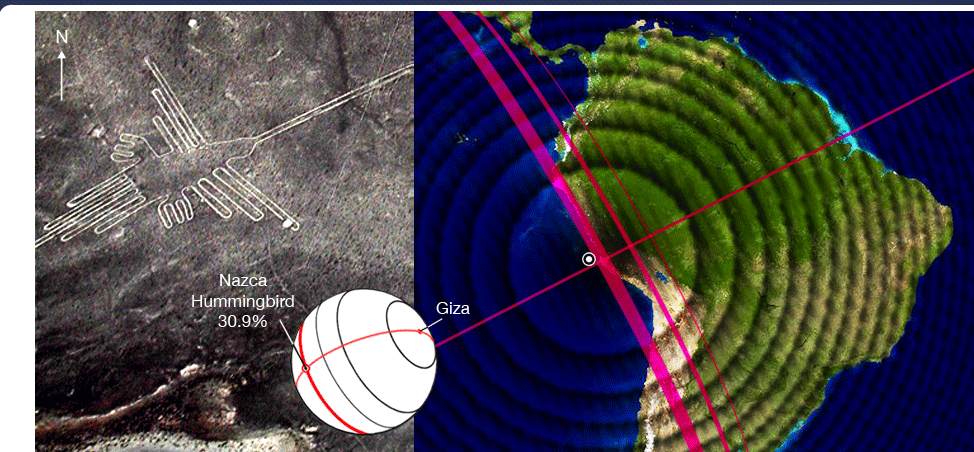Infrasound Pulsation in Nazca, Peru
Update: At Least 450 Killed in Big Peru Quake
By Martin Mejia and Mauricio Munoz for AP
August 16, 2007
Ica, Peru - The death toll rose to 450 on Thursday in the magnitude-8 earthquake that devastated cities of adobe and brick in Peru's southern desert. Survivors wearing blankets walked like ghosts through the ruins.
Dust-covered dead were pulled out and laid in rows in the streets, or beneath bloodstained sheets at damaged hospitals and morgues. Doctors struggled to help more than 1,500 injured, including hundreds who waited on cots in the open air, fearing more aftershocks would send the structures crashing down.
Destruction was centered in Peru's southern desert, at the oasis city of Ica and the nearby port of Pisco, about 125 miles southeast of the capital, Lima...
In Lima, 95 miles from the epicenter, only one death was recorded. But the furious two minutes of shaking prompted thousands to flee into the streets and sleep in public parks.
"The earth moved differently this time. It made waves and the earth was like jelly," said Antony Falconi, 27, trying to find a bus to take him home.
Scientists said the quake was a "megathrust" _ a type of earthquake similar to the catastrophic Indian Ocean temblor in 2004 that generated deadly tsunami waves. "Megathrusts produce the largest earthquakes on the planet," said USGS geophysicist Paul Earle.
Wednesday's quake caused a tsunami as well, but scientists expected surges of no more than 1.6 feet in faraway Japan.
In general, magnitude 8 quakes are capable of causing tremendous damage. Quakes of magnitude 2.5 to 3 are the smallest generally felt, and every increase of one number on the magnitude scale means that the quake's magnitude is 10 times as great.
The temblor occurred in one of the most seismically active regions in the world at the boundary where the Nazca and South American tectonic plates meet. The plates are moving together at a rate of 3 inches a year, Earle said.
The last time a quake of magnitude 7.0 or larger struck Peru was in September 2005, when a 7.5-magnitude earthquake rocked the country's northern jungle, killing four people. In 2001, a 7.9-magnitude quake struck near the southern Andean city of Arequipa, killing 71.
Analysis
The Nazca tectonic plate's triggering of the 8.0 earthquake event of August 15th has been defined as a "megathrust" quake by seismologists due to its undulating power and similarity to the 2004 Indian Ocean 9.2 earthquake and tsunami.
This type of deep undulating intensity is part of a regional infrasonic resonance amplified by the piezoelectric limestone bedrock. Quartz and calcite crystals have long been used as transducers to convert acoustic signals into mechanical/kinetic energy, the exact process by which the Nacza tremor was resonantly amplified.
Nazca (14.83S 74.95W) is 7,673 miles from the Orion pyramids of Giza, Egypt, a distance that is 30.9% of the Earth's mean circumference of 24,892 miles. This unusual earthquake activity is likely a forerunner of more destructive forces that produce piezoelectric firestorms.
Waves of piezoelectric fires previously scorched Italy's Berici Hills and are simultaneously occurring in Messina, Italy, Ratria, India, Bodibe, South Africa, Seattle, Vallejo and Santa Barbara, USA.





